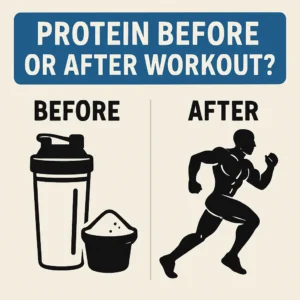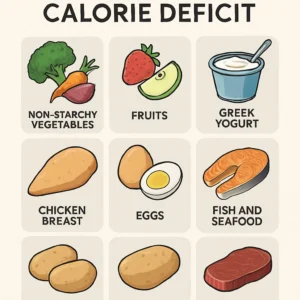When it comes to shedding extra pounds, many people wonder if jogging for weight loss is the answer they’ve been looking for. Jogging is one of the most accessible and straightforward aerobic exercises, making it an attractive option for those eager to kickstart their weight loss journey. In this comprehensive guide, we’ll explore the benefits of jogging and calorie burn, compare jogging to running, and share practical tips on how to integrate jogging into your routine. Whether you’re a complete beginner or an experienced athlete, you’ll discover actionable strategies to maximize your weight loss jogging efforts. Let’s dive into why weight loss jogging works and how you can make the most of it.
The Benefits of Jogging for Weight Loss

Jogging and calorie burn go hand in hand when pursuing fat reduction goals. The rhythmic motion of jogging not only helps you burn calories but also stimulates your metabolism to continue working efficiently throughout the day. A consistent jogging routine can lead to significant belly fat reduction, targeting stubborn areas that many diets alone struggle to address. Beyond fat loss, jogging benefits include improved cardiovascular health, increased endurance, and better mood regulation, thanks to the endorphins released during exercise. Incorporating jogging into your weekly schedule can create metabolic improvements that help maintain your weight loss gains over the long term. Moreover, the simplicity of jogging—requiring minimal equipment and planning—makes it easier to stick with and turn into a sustainable habit.
Calorie Burn and Weight Loss
One of the primary reasons weight loss jogging is effective is the high calorie burn it provides. Depending on your pace, terrain, and body weight, jogging can burn anywhere from 300 to 600 calories per hour. This creates a significant caloric deficit when combined with a balanced diet, allowing your body to tap into stored fat for energy. Additionally, studies show that moderate-intensity aerobic exercise like jogging can elevate your resting metabolic rate for hours after your workout, a phenomenon known as excess post-exercise oxygen consumption (EPOC). Over time, this metabolic boost contributes to overall calorie expenditure, making it easier to achieve and maintain a healthy weight. Remember, consistency is key: regular sessions of weight loss jogging will yield far greater results than sporadic, intense workouts.
Belly Fat Reduction
Targeting belly fat reduction is a major concern for many who embark on a jogging benefits program. Visceral fat—the deep belly fat surrounding your organs—poses health risks like insulin resistance and cardiovascular disease. Jogging regularly helps mobilize this fat, reducing waist circumference and improving metabolic health. While spot reduction is a myth, a combination of total-body jogging and calorie deficit will gradually shrink abdominal fat stores. Incorporating hill sprints or incline workouts into your jog can further intensify the calorie burn around the midsection. Over weeks and months of steady weight loss jogging, you’ll notice not only a slimmer waistline but also better core strength and posture as your body adapts to the movements.
Metabolic Improvements
Beyond burning calories, weight loss jogging triggers important metabolic changes that aid long-term fat loss. Regular jogging increases mitochondrial density in muscle cells, improving your body’s ability to burn fuel efficiently. As your metabolic rate rises, you’ll find it easier to maintain a healthy calorie balance even on rest days. Improved insulin sensitivity is another benefit of jogging, helping regulate blood sugar levels and reducing the risk of type 2 diabetes. Additionally, metabolic improvements from jogging can enhance your energy levels and reduce fatigue throughout the day. When combined with sound nutritional habits, these physiological adaptations create a positive feedback loop that supports ongoing weight loss and fitness gains.
How to Start Jogging for Weight Loss
Starting a jogging for weight loss routine can feel daunting if you’ve never run before. However, with the right beginner jogging tips and gradual progression, you’ll build endurance without risking injury. First, choose comfortable running shoes designed for your foot type to avoid discomfort and blisters. Plan your jogging routes on flat, even surfaces and avoid overly hilly terrain until you have more experience. Begin with a mix of walking and light jogging—this approach will help condition your muscles, joints, and cardiovascular system. Consistency matters more than intensity at this stage; aim for three sessions a week, gradually increasing the jogging intervals. By laying a solid foundation, you’ll set yourself up for safe, sustainable progress in your weight loss jogging journey.
Beginner Tips for Jogging
If you’re new to jogging benefits, start slow and steady to minimize soreness and overtraining risk. Begin with short sessions—such as 10 minutes of light jogging followed by walking—then gradually increase your jogging time as your fitness improves. Pay attention to your body’s signals: if you experience sharp pain or extreme fatigue, slow down or take a rest day. Hydration is crucial, so drink water before and after your sessions, and consider a sports drink for longer jogs. Wearing reflective clothing is important if you jog early in the morning or late at night. Tracking your progress with a simple app or journal can help keep you motivated and hold you accountable to your weight loss jogging goals.
Proper Jogging Technique
Maintaining proper technique ensures you get the most out of each session and reduces injury risk. Keep your head up and gaze forward, avoiding the temptation to look down at your feet. Relax your shoulders and swing your arms naturally, keeping them at a 90-degree angle. Land mid-foot with each stride, allowing your knee to flex slightly to absorb impact. Aim for a cadence of 160–180 steps per minute to improve efficiency and reduce pounding. Consistent attention to form will make your jog feel smoother over time and support better calorie burn with each step.
How Often to Jog
Determining how often to jog depends on your schedule, fitness level, and recovery needs. For most beginners, 3–4 sessions per week offers a balanced approach between progress and rest. As your endurance grows, you can increase frequency to up to 5 sessions weekly, provided you monitor for signs of overtraining. Incorporate rest days or active recovery—such as gentle yoga or walking—to give your muscles time to repair. Splitting your jogging sessions into shorter runs (e.g., two 20-minute jogs) can also fit busy schedules while maintaining calorie burn. Listen to your body: sufficient rest and proper nutrition are just as important as jogging frequency when aiming for weight loss jogging success.
Differences Between Jogging and Running
Many people wonder whether weight loss jogging or running offers better results. While both are forms of aerobic exercise, the primary difference lies in intensity and impact. Running typically involves faster paces and higher impact forces, translating to greater calorie burn per minute but also increased risk of injury. Jogging benefits include lower joint stress and easier long-term adherence due to the moderate intensity. Your personal goals, fitness level, and injury history should guide your choice between jogging and running for weight loss. Incorporating both styles into your routine can provide variety and leverage the unique advantages of each.
Which is More Effective for Weight Loss?
When comparing weight loss jogging vs. running, effectiveness boils down to sustainability and overall calorie burn. Although running burns more calories per minute, many individuals find it harder to maintain high-intensity efforts consistently. Jogging for weight loss offers a balance: you can sustain longer sessions, allowing for comparable total calorie expenditure over time. Furthermore, jogging’s lower intensity helps preserve muscle mass, which supports a healthy metabolic rate. For those focused on long-term weight management, developing a brisk jog routine may lead to more consistent results and fewer setbacks from injury or burnout.
The Impact of Intensity and Duration
Both intensity and duration play critical roles in determining the total calorie burn of your workouts. High-intensity interval training (HIIT) sessions—alternating short bursts of running with jogging recovery—can maximize calorie burn in less time. However, steady-state jogging sessions of longer duration also effectively burn calories and improve endurance. A 60-minute jog at a moderate pace may burn as many total calories as a 30-minute run at a faster pace, depending on individual factors. Balancing different workout types in your schedule can optimize weight loss jogging outcomes and prevent plateaus. Pay attention to perceived exertion, and adjust your sessions based on both your performance and recovery needs.
Combining Jogging with Other Exercises

While jogging and calorie burn are powerful, combining jogging with other exercises supercharges your weight loss journey. Strength training builds muscle mass, which increases your resting metabolic rate and enhances your body’s fat-burning capacity. Core and stability exercises complement jogging by supporting proper form and reducing injury risk. Adding low-impact cross-training like cycling or swimming can boost calorie burn without overloading your joints. When integrated into a balanced program, these modalities ensure continuous progress and reduce workout boredom. Read on to discover specific strategies for enhancing your weight loss jogging routine.
Strength Training for Enhanced Weight Loss
Strength training is a crucial complement to jogging benefits because lean muscle burns more calories at rest than fat tissue. Aim to include 2–3 strength workouts per week, targeting all major muscle groups with exercises like squats, lunges, push-ups, and deadlifts. Incorporate compound movements to get the most out of each set and maximize time efficiency. Use moderate weights and higher repetitions (10–15 reps) to build endurance, or heavier weights with lower reps (6–8 reps) to build strength—both approaches support weight loss jogging by boosting metabolism. Always perform a dynamic warm-up before lifting, and allow 48 hours of recovery for each muscle group. By combining strength training with your jogging routine, you’ll see faster fat reduction and improved overall fitness.
Interval Training and Jogging
Interval training involves alternating between high-intensity bursts and recovery periods, an approach that keeps your body guessing and maximizes calorie burn. For example, sprint for 30 seconds, then jog or walk for 90 seconds, repeating this cycle for 15–20 minutes. This method elevates your heart rate quickly, promoting greater EPOC and post-exercise calorie expenditure. Incorporating intervals into your jogging sessions enhances both aerobic and anaerobic capacity, leading to faster improvements in speed and endurance. Beginners can start with shorter intervals—20 seconds of faster jogging, followed by 40 seconds of slower pace—and gradually increase intensity. Always finish with a cooldown jog and gentle stretching to support recovery. Interval-based weight loss jogging sessions are time-efficient and highly effective for plateau busting.
Diet and Jogging for Weight Loss
No weight loss jogging plan is complete without proper nutrition. What you eat before and after your jog greatly influences your performance, recovery, and fat loss progress. Consuming the right balance of macronutrients helps fuel your workouts and rebuild muscle tissue. Here, we’ll cover nutritional tips for joggers and recommend some of the best foods to eat around your jogging sessions. You’ll learn how small adjustments to your diet can amplify the effects of your weight loss jogging routine and keep you energized throughout the day.
Nutritional Tips for Joggers
Timing and composition of your meals play a crucial role in jogging and calorie burn. Eat a light snack containing complex carbohydrates and protein—like a banana with peanut butter—30–60 minutes before your session to maintain stable energy levels. After jogging, replenish glycogen stores and support muscle repair with a balanced meal of lean protein, whole grains, and vegetables within two hours. Stay hydrated by drinking water throughout the day, and consider electrolyte-rich beverages if you tend to sweat heavily. Avoid high-sugar sports drinks unless you’re doing prolonged, intense exercise. Finally, track your calorie intake to ensure you maintain a moderate deficit without depriving your body of essential nutrients.
Below is a sample table of suggested foods to optimize your jogging sessions and support weight loss jogging goals. Choose from these options based on your personal preferences and dietary restrictions.
| Meal Timing | Food Options | Main Benefits |
|---|---|---|
| Pre-Jog Snack | Banana & Almond Butter | Provides quick carbs and healthy fats |
| Post-Jog Meal | Grilled Chicken with Quinoa & Veggies | Replenishes glycogen and repairs muscle |
| Hydration | Coconut Water or Electrolyte Drink | Restores lost minerals and fluids |
| Snack | Greek Yogurt with Berries | Rich in protein and antioxidants |
Best Foods Before and After Jogging
Choosing the best foods before and after jogging ensures you get the energy boost you need and recover effectively. For a pre-jog meal, opt for easily digestible carbohydrates—such as oatmeal with sliced fruit—or a small smoothie with yogurt, berries, and spinach. These options deliver steady energy without weighing you down. Post-jog, focus on meals rich in lean protein like turkey, fish, or tofu combined with complex carbs such as sweet potatoes or brown rice. Including colorful vegetables provides vitamins and minerals essential for muscle repair and immune support. Remember, portion control is key: too much food can negate your calorie burn, while too little can impair recovery and performance.
Common Mistakes to Avoid
Even experienced joggers can make errors that hinder progress or cause injury. Recognizing and avoiding these common mistakes will keep you on track toward your weight loss jogging goals. Whether you’re overtraining without proper rest or skipping warm-ups, these pitfalls can undermine all your hard work. By understanding what to avoid, you’ll maintain consistency, stay injury-free, and achieve better results from your jogging benefits routine.
Overtraining and Recovery
Pushing your body too hard without adequate recovery can lead to burnout, decreased performance, and even chronic injuries. Many beginners believe that more is always better, but excessive jogging without rest days disrupts muscle repair and can lower your immune function. Listen to your body: persistent soreness, insomnia, or irritability are signs you need more recovery time. Incorporate active recovery methods like gentle yoga or swimming to promote blood flow without adding undue stress. Also, ensure you get 7–9 hours of sleep per night to support hormonal balance and muscle regeneration. Proper recovery amplifies the benefits of your weight loss jogging regimen and prevents setbacks.
Inadequate Warm-Up and Injury Prevention
Skipping warm-ups or cool-downs is a recipe for injury and reduced performance. A dynamic warm-up—consisting of leg swings, arm circles, and light lunges—prepares your muscles and joints for the demands of jogging. Similarly, a post-jog cooldown with gentle stretches helps flush metabolic waste and improve flexibility. Common injuries like shin splints and runner’s knee often stem from neglecting these essential routines. Invest 5–10 minutes before and after each session to warm up and cool down properly. By prioritizing injury prevention, you’ll maintain consistency in your weight loss jogging journey and safeguard your long-term health.
FAQs about Jogging and Weight Loss
To wrap up our comprehensive guide, here are answers to some of the most frequently asked questions about weight loss jogging. These FAQs cover common concerns about effectiveness, ideal durations, and combining jogging with other fitness strategies. If you’re still on the fence about starting a jogging routine or wondering how to optimize your workouts, these concise answers will help clarify your path forward.
Can Jogging Alone Help You Lose Weight?
Jogging alone can indeed help you lose weight, provided you maintain a consistent routine and pair it with a calorie-controlled diet. As an aerobic exercise, jogging for weight loss burns calories and improves metabolic rate. However, incorporating strength training and proper nutrition amplifies the results and preserves lean muscle mass. If your only concern is calorie burn, a regular jogging schedule of 3–5 sessions per week can create a sustainable calorie deficit. Listen to your body, adjust your pace as you progress, and remember that dietary habits play an equally important role in long-term weight management.
Ideal Jogging Duration for Maximum Benefits
The ideal jogging duration depends on your fitness level, goals, and schedule. Beginners may start with 20–30 minutes per session, gradually building to 45–60 minutes as endurance improves. Longer sessions—up to 90 minutes—can increase total calorie burn, but be mindful of overtraining risks. For busy individuals, splitting your jogging into two 20-minute runs per day can still deliver effective calorie expenditure and metabolic benefits. Ultimately, consistency and progression matter more than hitting a specific time target. Track how your body responds, and adjust your jogging duration to balance effectiveness, enjoyment, and recovery.
Two Quick Checklist Lists
Before you lace up your shoes, review these concise checklists to ensure you’re fully prepared for a safe and effective weight loss jogging session.
- Equipment and Gear
- Proper running shoes
- Moisture-wicking clothing
- Reflective vest (if needed)
- Pre-Run Essentials
- Light snack (30–60 min prior)
- Hydration (water or electrolyte drink)
- Dynamic warm-up routine
Conclusion

Jogging for weight loss offers a versatile, effective, and accessible way to burn calories and improve your overall health. From the calorie burn and belly fat reduction benefits to the metabolic improvements that support long-term weight management, jogging should be a staple in any fitness regimen. Starting wisely with proper technique, pacing, and nutrition will help you build consistency and avoid injury. By combining jogging with strength training, interval workouts, and a balanced diet, you’ll amplify your weight loss results and maintain your progress. Take action today: lace up, hit the pavement, and experience the transformative power of jogging and calorie burn on your weight loss journey.



